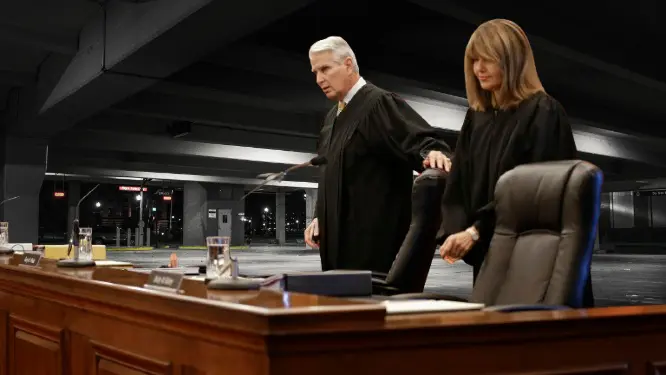If you have ever slipped on a wet floor or tripped on broken steps, you’ve seen the risks of unsafe property. These types of accidents fall under California premises liability law.
This law makes sure that property owners keep their spaces safe. It protects people who visit homes, businesses, or public areas. In 2025, California premises liability law is changing. New rules are being discussed. Some court cases are also shifting how the law works.
So why should this matter to you?
If you are a homeowner, a business owner, or someone who’s been hurt on someone else’s property, these changes could impact your rights. That’s why understanding what’s happening in 2025 is so important.
What Is California Premises Liability Law?
Let’s start with the basics. California Premises Liability Law says that property owners must keep their property safe. If someone gets hurt because of a dangerous condition, the owner may be held responsible.
Examples of dangerous conditions include:
- Wet or slippery floors
- Broken stairs or handrails
- Cracked sidewalks
- Poor lighting in parking lots
- Falling ceiling tiles or debris
This law applies to many places, like homes, stores, schools, and public parks. It also applies to both indoor and outdoor areas. In 2025, the way this law is handled in court is starting to change.
New Proposals for 2025: What’s on the Table?
Several California legislators and legal reform advocates are pushing for updates that could significantly impact how premises liability cases proceed. As of March 2025, the following proposals and court opinions are gaining traction:
Shorter Statute of Limitations for Certain Claims
Proposed Bill SB-2025 aims to reduce the time limit for filing certain types of premises-related injury claims from two years to one year. The rationale is to encourage faster case resolution and reduce legal backlog. However, critics argue it could disadvantage injured parties who need time to gather evidence or recover.
More Strict Comparative Fault Standards
Recent court decisions (e.g., Serrano v. Capital Mall, 2024) have leaned toward increasing the threshold for proving a property owner’s negligence. In 2025, courts may require plaintiffs to show more specific proof of knowledge and causation, placing a greater burden on injured parties.
Mandated Surveillance Disclosure
A new motion is under review to make it mandatory for commercial premises to release surveillance footage within 30 days upon request in injury cases. This could both help and hurt plaintiffs’ evidence cuts both ways.
While none of these have become statewide law yet, forward-looking law firms are already adjusting their case preparation strategies based on these likely changes.
How Will These Changes Affect Victims and Property Owners?
For injured individuals, these updates could mean a shorter window to act, more proof requirements, and additional legal hurdles. Forward-planning becomes crucial. Waiting too long to document injuries, collect witness statements, or consult an attorney could now lead to missed opportunities for justice.
Conversely, for property owners, the stakes are also rising. Risk mitigation must be proactive. Maintaining safety logs, ensuring prompt repairs, and documenting safety inspections can all be critical in defending against liability claims.
Practical Example: A Slip-and-Fall at a Local Retail Store
Let’s walk through a real-world example that illustrates how these laws could evolve:
Jane, a 42-year-old school teacher, slipped on an unmapped puddle at a Sacramento department store in late 2024. There were no warning signs posted, and no employees responded until she screamed for help.
Under current law, Jane filed a lawsuit citing negligence and failure to warn. The store had video footage showing a custodian walking by the spill without cleaning it which greatly strengthened her case.
However, under the proposed 2025 rules, Jane’s legal team would have only one year to file suit and would need to provide more detailed evidence proving the store’s management had prior knowledge of the danger. Even with footage, if the court judged the evidence insufficient, her claim could be dismissed.
This example underscores why staying informed is vital, whether you’re a victim or a business.
Legal Definitions That Matter in 2025
Using law jargon properly is key to understanding the bigger picture. Let’s clarify a few terms that will likely show up in future premises liability cases:
- Constructive Notice: The concept that a property owner should have known about a dangerous condition, even if they didn’t witness it firsthand.
- Comparative Negligence: A legal doctrine that assigns blame proportionally between parties.
- Invitee vs. Licensee vs. Trespasser: Legal categories that determine the duty of care owed. Most liability claims involve inviting people legally allowed on the property.
With courts scrutinizing these definitions more tightly in 2025, plaintiffs must build stronger, better-documented cases, and defendants must strengthen safety protocols.
What This Means for Law Firms and Clients in 2025
If you are an attorney, adjust your case intake and evaluation protocols to accommodate tighter timelines and higher proof standards. If you’re a client, particularly someone injured or representing a business, act fast and retain legal counsel early.
Law firms in California are now investing in:
- AI legal research tools for faster precedent review
- Digital intake systems that log incident details immediately
- Expert witness partnerships to support complex claims
The firms that thrive in 2025 will be those that embrace agility both in how they represent clients and how they navigate new regulatory expectations.
Your Next Step: Don’t Wait Until It’s Too Late
The bottom line? Premises liability law is not static, and in 2025, it’s evolving fast. Whether you’ve been injured or are trying to avoid liability as a property owner, you need the facts and fast legal action.
That’s why Mutechlawyer is here.
Our team stays ahead of legal trends and legislative changes, so your rights are protected, and your case is handled with the urgency and precision it deserves.
👉 Visit Mutechlawyer.com for free legal resources or schedule a free consultation today. Let us help you understand your rights and protect your future.
Final Thoughts
In 2025, California premises liability law is going through changes. These updates affect when and how you can file a claim. They also change what kind of proof is needed. For injury victims, that means acting fast. For property owners, it means being more careful than ever.
Don’t guess — get help. Let Mutechlawyer guide you. We’re here to explain the law, protect your rights, and give you peace of mind.




Leave a Comment